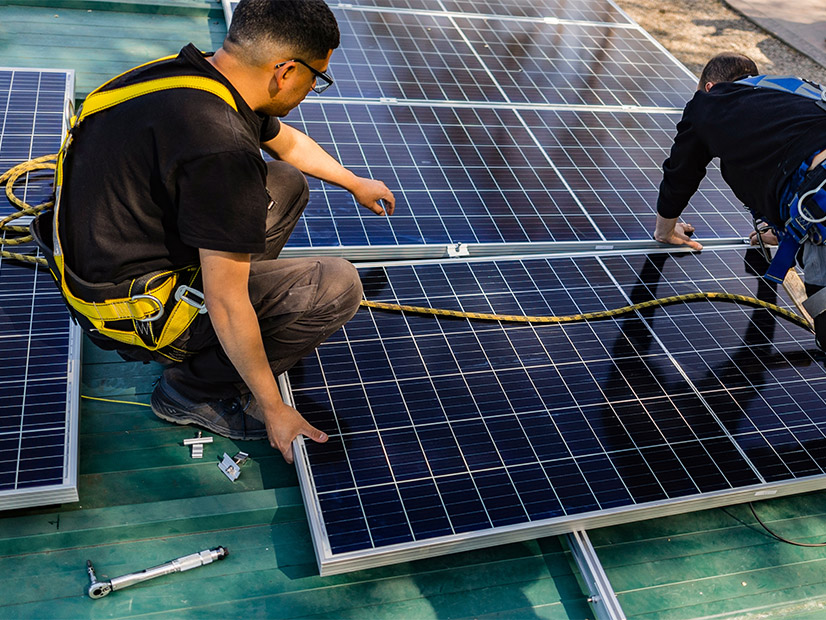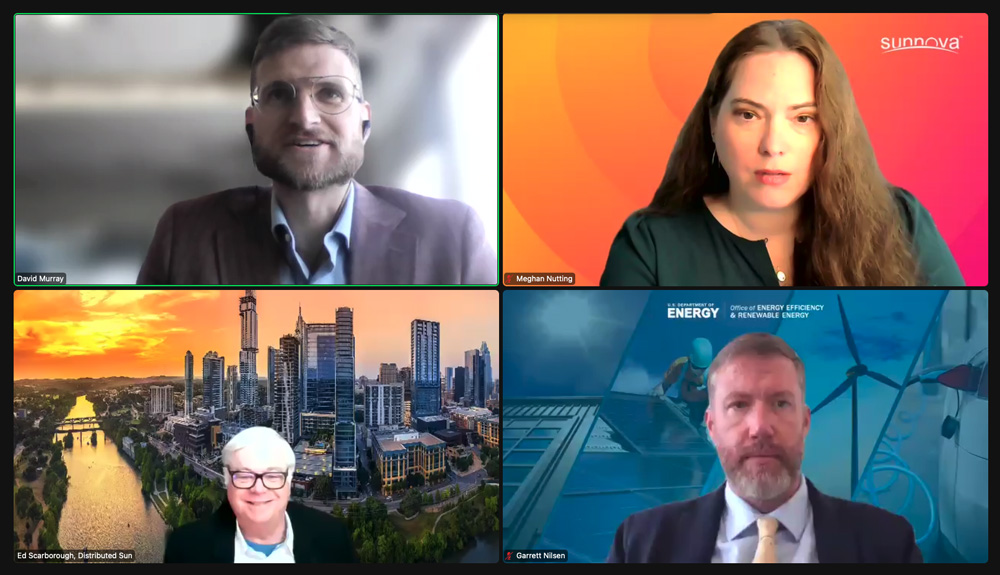The Biden administration’s goal for decarbonizing the power sector by 2035 got a boost Wednesday with EPA’s launch of a $7 billion grant competition to expand residential solar in low-income communities.
“The new grant competition will provide funds to expand existing low-income solar programs as well as develop and implement new Solar for All programs nationwide,” EPA announced. “Solar for All programs ensure low-income households have equitable access to residential rooftop and residential community solar power.”
The funding comes from the Inflation Reduction Act’s $27 billion green bank, the Greenhouse Gas Reduction Fund. The program will award up to 60 grants to states, territories, tribal governments, municipalities and eligible nonprofits for creating or expanding residential solar to low-income and disadvantaged communities. EPA said it will guarantee that participating households save a minimum of 20% on their total electricity bills.
“For too long, overburdened communities on the front lines of the climate crisis have been left behind and locked out of clean energy investments and climate solutions,” EPA Administrator Michael Regan said. “This historic boost in solar investments will advance millions of residential solar projects nationwide, protect people and the planet, deliver environmental justice, save families money and create good-paying jobs.”
The deadline to apply is Sept. 26. Grants will be provided in three tiers, “calibrated to the number of households the applicant intends the program to serve,” EPA said: $25 million to $100 million; $100 million to $250 million; and $250 million to $400 million.
Regan announced the launch in Vermont, alongside Sen. Bernie Sanders. The announcement coincided with a webinar produced by D.C.-based OurEnergyPolicy examining the problems that have slowed or stymied the administration’s growth targets for solar.
Noting that to meet the administration’s objective, the industry will have to triple annual deployment in the next few years, David Murray, director of solar policy at the American Clean Power Association, asked panelists to describe the reforms that will be needed.
Ed Scarborough, vice president of development at Distributed Sun, said permitting needs to be streamlined and standardized across the country.
“The backlog of transmission interconnection applications has become a major roadblock for new projects, in part because utilities and transmission line operators are also upgrading the grid,” Scarborough said. “The queues also are very crowded right now, and there’s just a tremendous number of projects in the queues, many of which will never actually be implemented. We need to see some work to clean up those queues so that the viable projects can get through the process much faster.”
Meghan Nutting, vice president of government and regulatory affairs at Sunnova Energy, said permitting rules vary by state and sometimes even within a state. She said Congress should end that.
“There are a couple of things Congress can do … all the way down to the state and very local level. One of the big things for distributed systems, sort of similar to large-scale systems, is permitting. Permitting is inconsistent across states; across even individual [localities] having jurisdiction within an individual state,” she said.
A battle between Congress and the administration over tariffs on imported solar panels has pumped up uncertainty. At this point, most solar panels are still imported, Murray said.
Garrett Nilsen, deputy director of the Department of Energy’s Solar Energy Technologies Office, agreed but said the situation will improve.
“The Inflation Reduction Act does give us a line of sight to seeing manufacturing … be repatriated to the United States, and we’ve seen dozens of manufacturing announcements representing over 100 GW of manufacturing capacity across the entire supply chain,” Nilsen said. “And of course, it’s going to take a little bit of time for these capacities to come online as people need to site their facilities and start to just start to build things out. But we’re working closely with the manufacturers, with the National Renewable Energy Lab and [with] others to help support those who want to manufacture in the United States.”
“The problem is a stop-start reaction to this continuing back-and-forth on tariffs for foreign goods,” Scarborough responded. “Developers need certainty going forward in their supply chain. And I would say it’s more than just the panels; it’s the inverters. It’s all the other things and … adding batteries.”
“Now, we are concerned about battery supplies and even the underlying minerals, [and] the amount of connectivity done to supply those going forward. Part of what we need is some type of roadmap on the availability of all the components of the supply chain, the rules and regulations around them, and trying to [get free from] this reactionary approach that we’ve been subjected to over the last couple of years,” he said.



